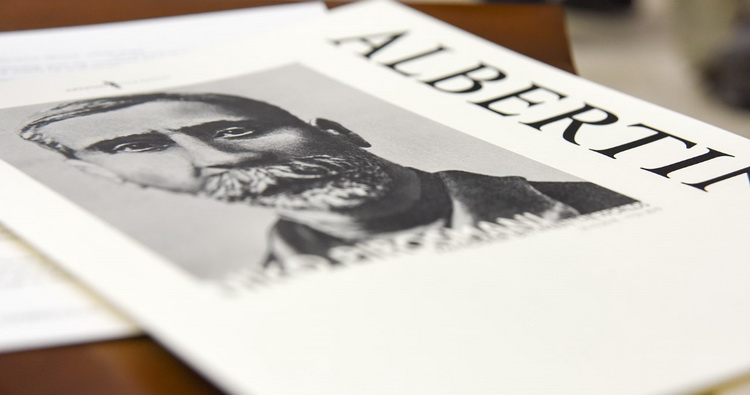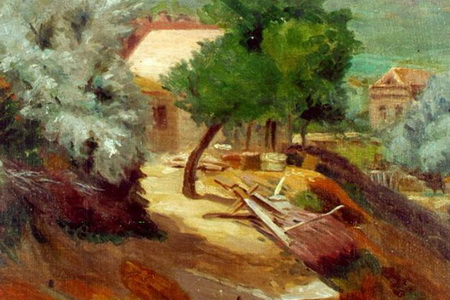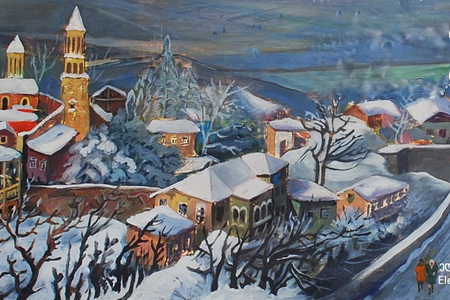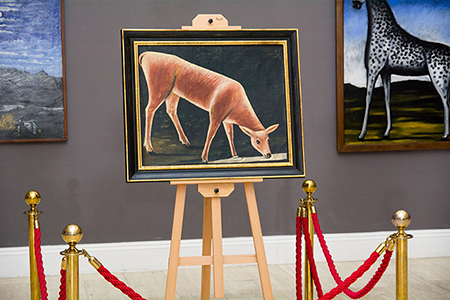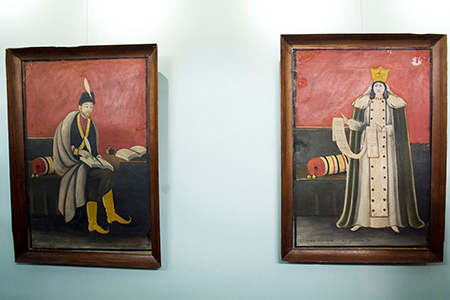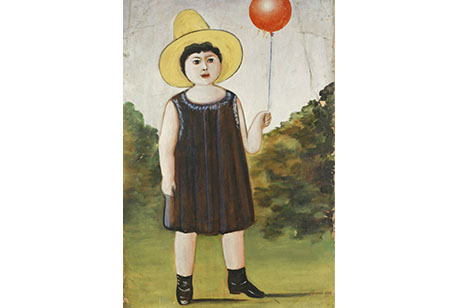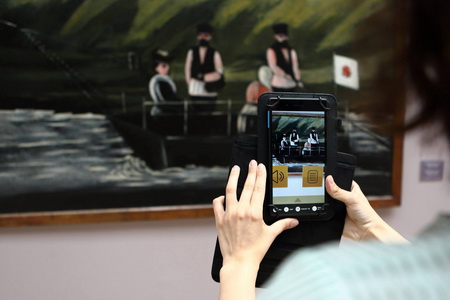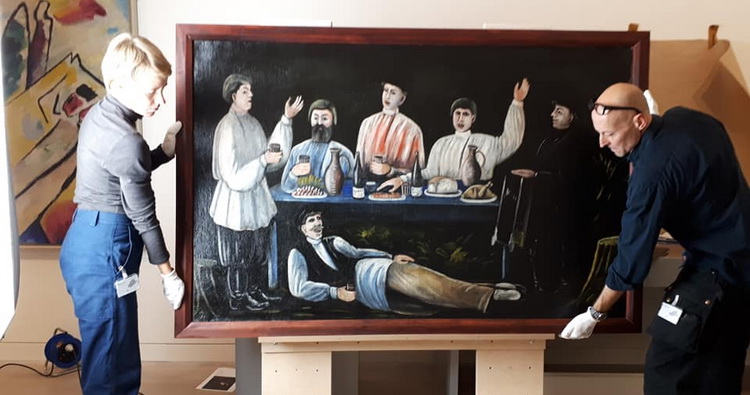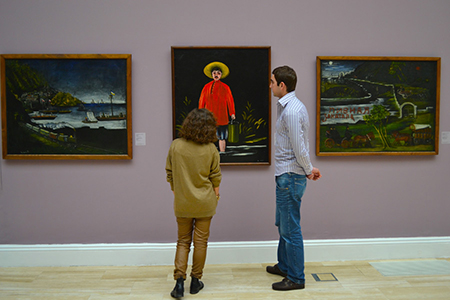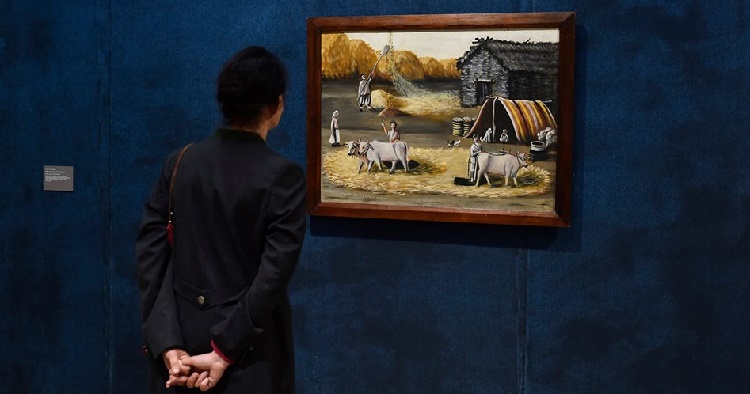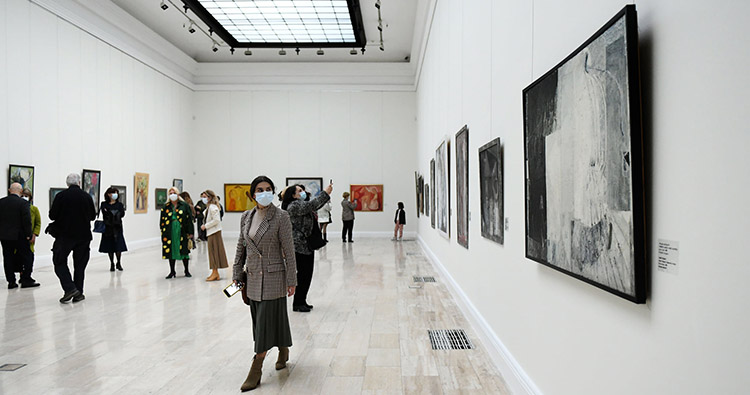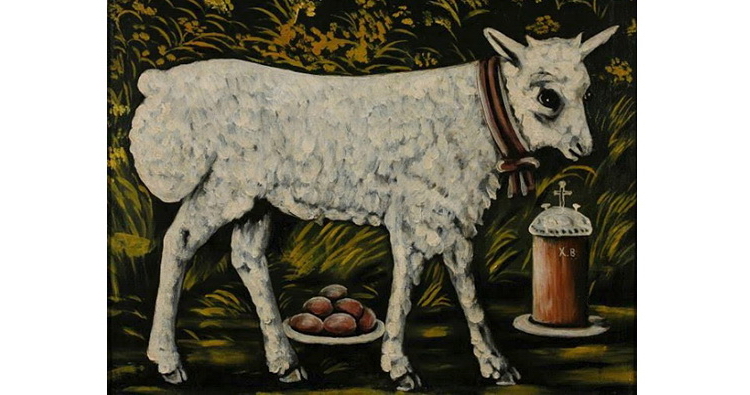Pirosmani painting displayed for first time in 39 years at Tbilisi museum
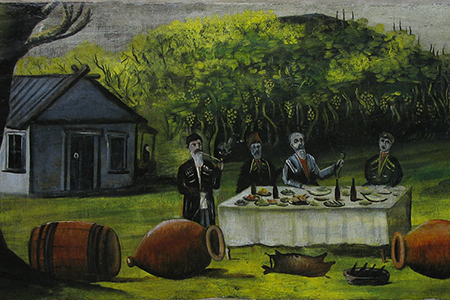
Art enthusiasts will be offered the opportunity to see a restored painting by Georgia’s celebrated late painter Niko Pirosmani for the first time in 39 years in Georgia's capital of Tbilisi tomorrow.
Held at the Georgian National Museum (GNM)’s Dimitri Shevardnadze National Gallery, the event will host visitors for a viewing of Pirosmani’s painting Sviri.
The work of the late artist (also known as Pirosmani) will be presented for public viewing for the first time since 1978.
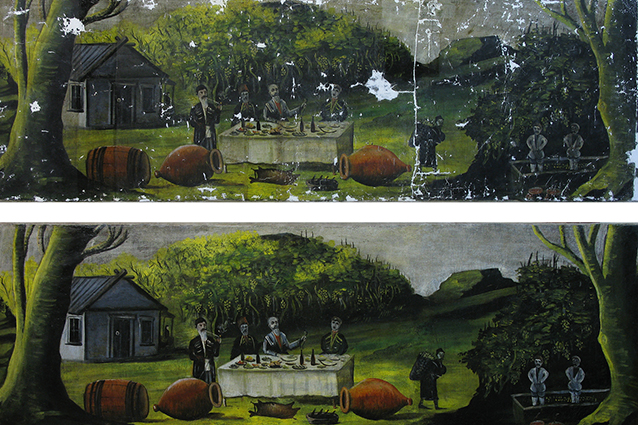
The painting underwent restoration work by GNM expert Nana Managadze. Photo: Georgian National Museum.
Acquired by the museum in 1930 from popular Georgian poet Giorgi Leonidze, the piece has been displayed only three times — in 1957, 1968 and 1978 — before it sustained damage that kept the artwork out of public exhibitions.
The painting was restored by GNM expert Nana Managadze within an ongoing project that involves the repair of damaged works by the renowned artist.
Following its presentation on January 13, Sviri will be added to the permanent exhibition of Pirosmani’s works.
Two of the painter’s other pieces Hunting in India and A Bear in Moonlit Night will also be added to the collection on permanent display.
Born in the Kakheti region in the village of Mirzaani in 1862, Niko Pirosmani took an early interest in painting and became a self-educated artist.
He later moved to Tbilisi and made a living painting shop plaques, portraits and landscapes for bar owners, however he never managed to escape poverty during his life in Georgia's capital.
Known as one of the foremost self-taught Georgian painters, Pirosmani was discovered by prominent Georgian artists Lado Gudiashvili, David Kakabadze and Kirill Zdanevich. Despite this recognition, he struggled to reach a wider audience and faced limited work opportunities.
Information on Pirosmani's life and information on his artistic legacy were mostly obtained by biographers and historians in the period after his death in 1918 when his talent began to be recognized.
 Tweet
Tweet  Share
Share

